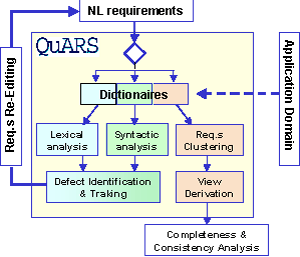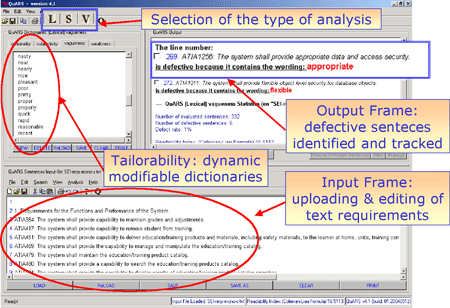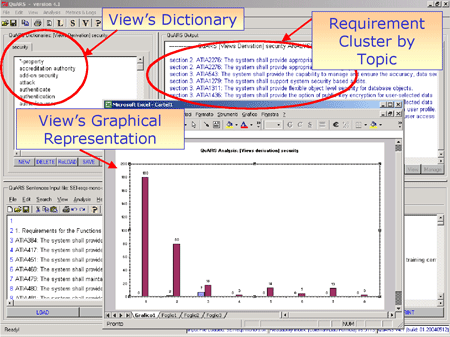|
|||||||
An Automatic Tool for Improving the Quality of Software Requirementsby Giuseppe Lami and Gianluca Trentanni The Quality Analyzer for Requirements Specifications (QuARS) is an innovative tool that enables the user to analyse natural language requirements automatically. Natural Language (NL) is still the most common way to express software requirements. In practice, there are numerous tools and techniques for managing such requirements; many are oriented towards the definition and provision of configuration management, and control the distribution of requirements. However, there is a scarcity of automatic support for the quality analysis of requirements expressed in NL. In the software industry, ambiguity analysis and consistency and completeness verification of software requirements are performed by humans, generally through a tedious clerical process that consists in reading requirements documents and looking for linguistic errors. For these reasons, we have developed QuARS (Quality Analyser for Requirements Specifications), an innovative tool that enables the user to analyse requirements expressed in NL automatically. QuARS performs a lexical and syntactical parsing of software requirements expressed in NL, and provides the following functionalities. Defective Sentence Identification (Expressiveness Evaluation) The Expressiveness quality model consists of three features, to be evaluated by means of indicators. Indicators are linguistic components, directly detectable and measurable in the requirements document, which reveal a defect in requirements. Special dictionaries contain the indicators QuARS needs for its analysis. The Expressiveness features are:
QuARS performs a lexical and syntactic analysis of the input file in order to identify those sentences containing defects according to the quality model. Requirements Clustering (View Derivation) Using QuARS
When the Expressiveness analysis is performed, the list of defective sentences is displayed in the GUI's output frame and a log file is created. The defective sentences can be tracked in the input requirements document and corrected if necessary (see Figure 2). Metrics measuring the defect rate and the readability of the requirements document under analysis are calculated and stored.
The output of the View derivation function is a log file containing the necessary clusters of requirements, ready to be used for consistency and completeness analysis purposes. The graphical representation (in an MS Excel graph) of the number of occurrences of these sentences belonging to a View in single sections of the document is also provided (see Figure 3). Because of its precision and ease of use, the QuARS tool can greatly improve the analysis of NL requirements. Experiments aimed at evaluating the impact of QuARS in the software development process and on the quality of the final product are currently in progress. Link: Please contact: Gianluca Trentanni, ISTI-CNR, Italy |
|||||||





